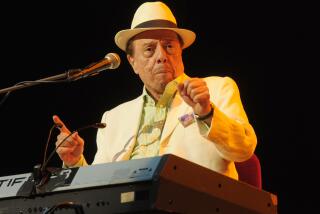Rhythms of Brazil, with diverse flavors
- Share via
The Orquestra de Sao Paulo made its U.S. debut Friday with a colorful, audience-friendly program of Brazilian music at the Orange County Performing Arts Center. The concert, led by music director John Neschling, was part of the Eclectic Orange Festival.
The opening work, Edino Krieger’s “Passacalha Para O Novo Milenio” (Passacaglia for the New Millennium), signaled much of what was to come. It began in strict classical European form, with repetition and embroidery of a short, strongly profiled theme. Midway through, however, the composer began introducing lively Brazilian march and dance rhythms to create a new kind of sound.
Villa-Lobos’ “Uirapuru,” a 1917 ballet named after a bird of the Amazon, reflected contemporaneous Stravinsky and French composers’ influences, but with distinct rhythmic energy alternating with passages of delicately scored exoticism.
Similarly, M. Camargo Guarnieri’s 1944 Symphony No. 2, subtitled “Uirapuru” in its dedication to Villa-Lobos, showed its own rhythmic take on Copland’s clarity and Bernstein’s interest in jazz, creating a large but classically structured work.
Brothers Sergio and Odair Assad were the virtuosic soloists in Castelnuovo-Tedesco’s Double Concerto for Two Guitars, a work of courtly and engaging imagination.
The orchestra played throughout with impressive energy and precision.
Claudio Santoro’s short showpiece, “Frevo,” was the single encore.
More to Read
The biggest entertainment stories
Get our big stories about Hollywood, film, television, music, arts, culture and more right in your inbox as soon as they publish.
You may occasionally receive promotional content from the Los Angeles Times.










